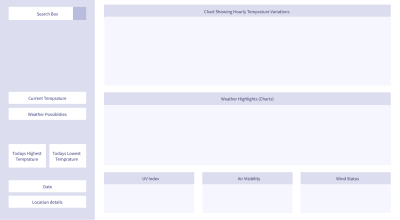
- #FIND BEST TRAINSLATION POINT CLOUD DIFFERENT SIZE HOW TO#
- #FIND BEST TRAINSLATION POINT CLOUD DIFFERENT SIZE FREE#
Limiting rotation: It is simple to limit to one axis of rotation by removing elements of the corvariance (H) matrix to match the desired 2D rotation matrix. In this application, I would like to limit my rotations to only one or two axes and do the same with my translations.įor limiting translation, this is simple, I think, because rotation and translation are decoupled. I am hoping to constrain the problem a bit more to use in a machining/inspection application. I’m honestly not quite sure if it is even possible. I’ve implemented a similar method but wonder if you (or others) might provide insight to my next challenge. This is a great, simple write up on a great method for registration. D, IEEE Transactions on Pattern Analysis and Machine Intelligence, Volume 9 Issue 5, May 1987 “Least-Squares Fitting of Two 3-D Point Sets”, Arun, K. When there are more than 3 points a least square solution is obtained. The solution presented can be used on any size dataset as long as there are at least 3 points. Plugging the centroids into the equation mentioned at the start we get Now that we have solved for R we can solve for t. if determinant(R) < 0Ī big thank you goes to Klass Jan Russcher for the solution. If it is then the 3rd column of V is multiplied by -1. This is addressed by checking the determinant of R (from SVD above) and seeing if it’s negative (-1). Sometimes the SVD will return a ‘reflection’ matrix, which is numerically correct but is actually nonsense in real life. There’s a special case when finding the rotation matrix that you have to take care of. The ordering of the multiplication is also important, doing it the other way will find a rotation from B to A instead. It’s doing a multiplication between 2 matrices where the dimensions effectively are, 3xN and Nx3, respectively. Pay close attention to the transpose symbol. It should end up being a 3×3 matrix, not an NxN matrix. One thing to be careful is that you calculate H correctly. Īt this point you may be thinking, “what the, that easy?!”, and indeed you would be right.

is an operation that subtracts each column in by. The next step involves accumulating a matrix, called H, and using SVD to find the rotation as follows: This removes the translation component, leaving on the rotation to deal with. To find the optimal rotation we first re-centre both dataset so that both centroids are at the origin, like shown below. We’re only interested in square matrices for this problem so I won’t go into detail about rectangular ones. If E is a square matrix then U, S and V are the same size as well. You only need to know that the SVD will decompose/factorise a matrix (call it E), into 3 other matrices, such that:

#FIND BEST TRAINSLATION POINT CLOUD DIFFERENT SIZE HOW TO#
I won’t go into details on how it works but rather how to use it. SVD is like this powerful magical wand in linear algebra for solving all sorts of numerical problems, but tragically wasn’t taught when I was at uni. The easiest way I found is using Singular Value Decomposition (SVD), because it’s a function that is widely available in many programming languages (Matlab, Octave, C using LAPACK, C++ using OpenCV …). There are a few ways of finding optimal rotations between points. This bit is easy, the centroids are just the average of the points and can be calculated as follows:Īnd are 3×1 vectors eg. Bring both dataset to the origin then find the optimal rotation R.R is a 3×3 rotation matrix and t is the translation vector (technically matrix Nx3).įinding the optimal rigid transformation matrix can be broken down into the following steps: Where A and B are sets of 3D points with known correspondences. If the data is noisy it will minimize the least squares error A minimum of 3 unique points is required for a unique solution.
#FIND BEST TRAINSLATION POINT CLOUD DIFFERENT SIZE FREE#
The solution presented will work with both noise free and noisy data. This problem arises especially in tasks like 3D point cloud data registration, where the data is obtained from hardware like a 3D laser scanner or the popular Kinect device. This is in contrast to an affine transform, which includes scaling and shearing.


This transformation is sometimes called the Euclidean or Rigid transform, because it preserves the shape and size. Here, ‘optimal’ or ‘best’ is in terms of least square errors. We want to find the best rotation and translation that will align the points in dataset A to dataset B. The corresponding points have the same colour, R is the rotation and t is the translation. An illustration of the problem is shown below for the simplest case of 3 corresponding points (the minimum required points to solve). Finding the optimal/best rotation and translation between two sets of corresponding 3D point data, so that they are aligned/registered, is a common problem I come across.


 0 kommentar(er)
0 kommentar(er)
